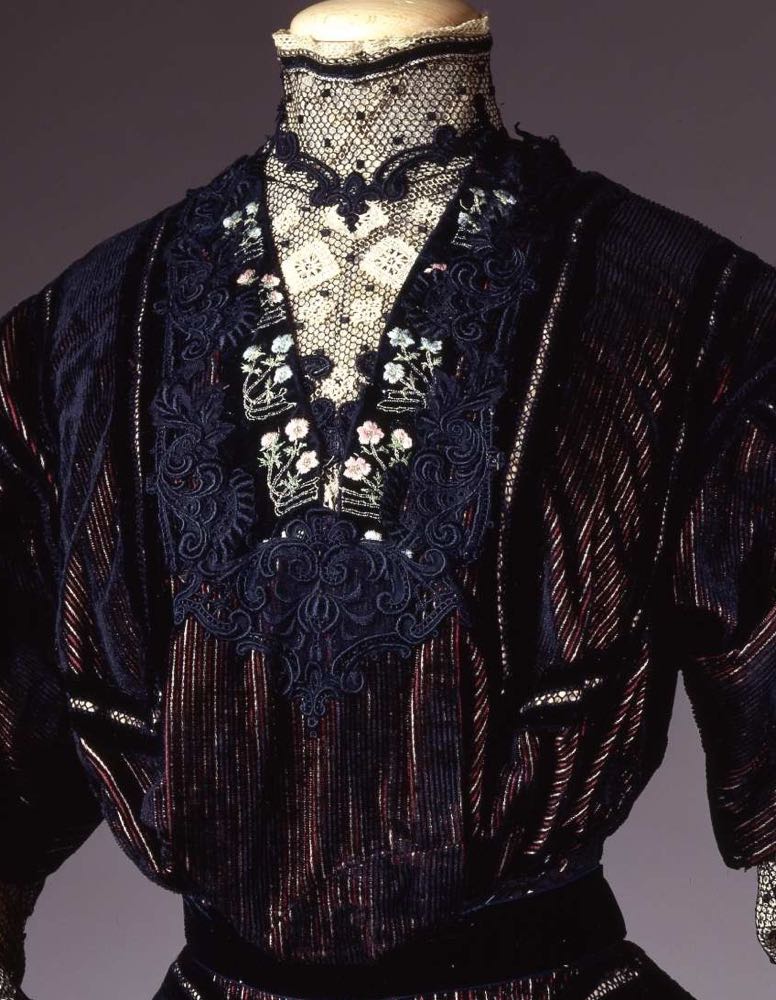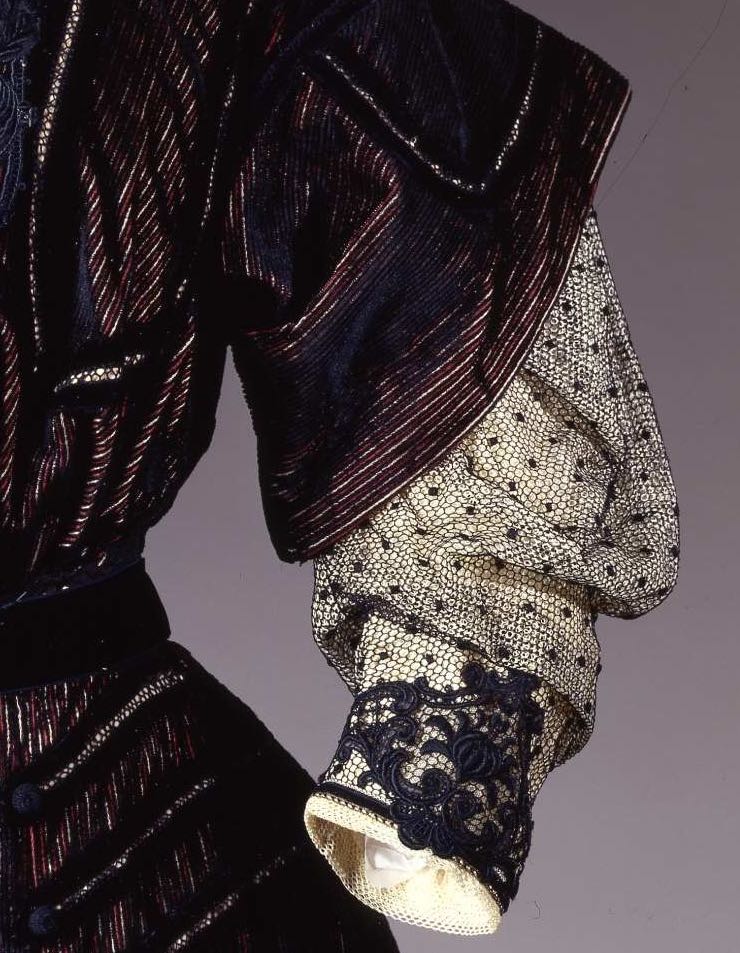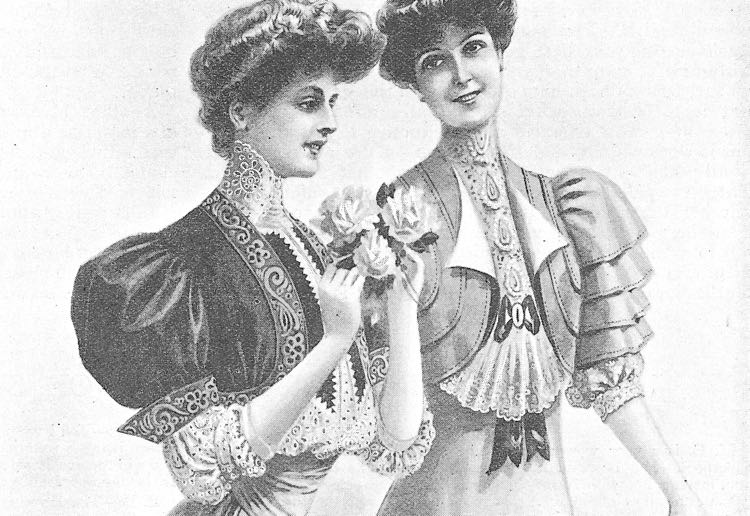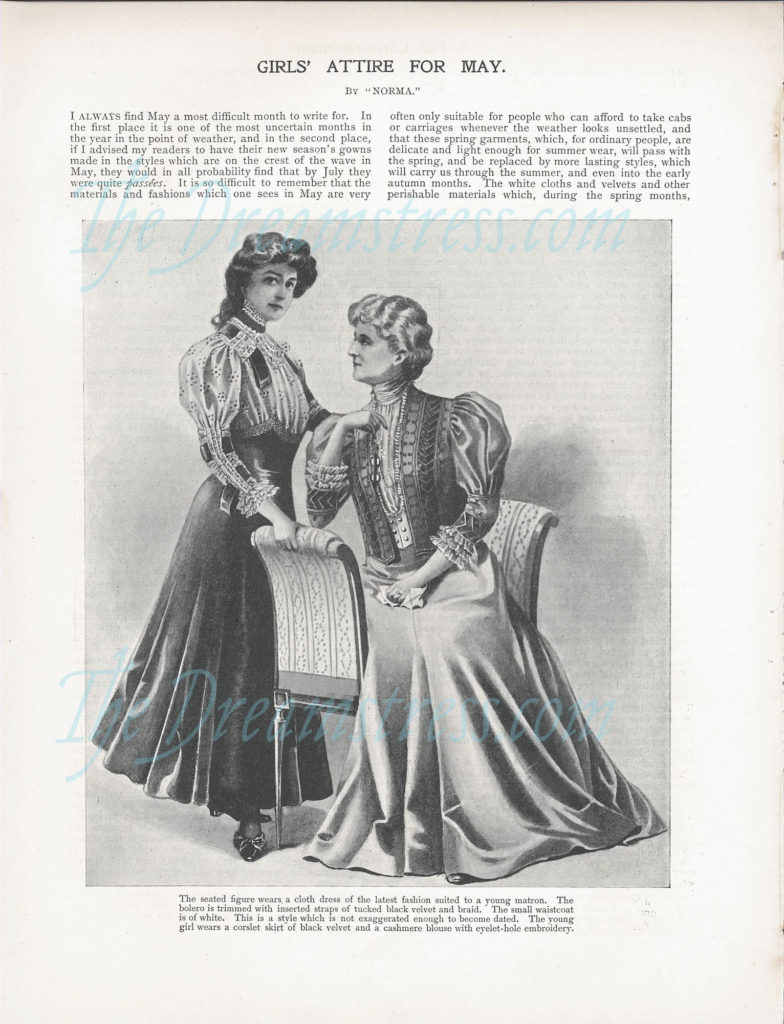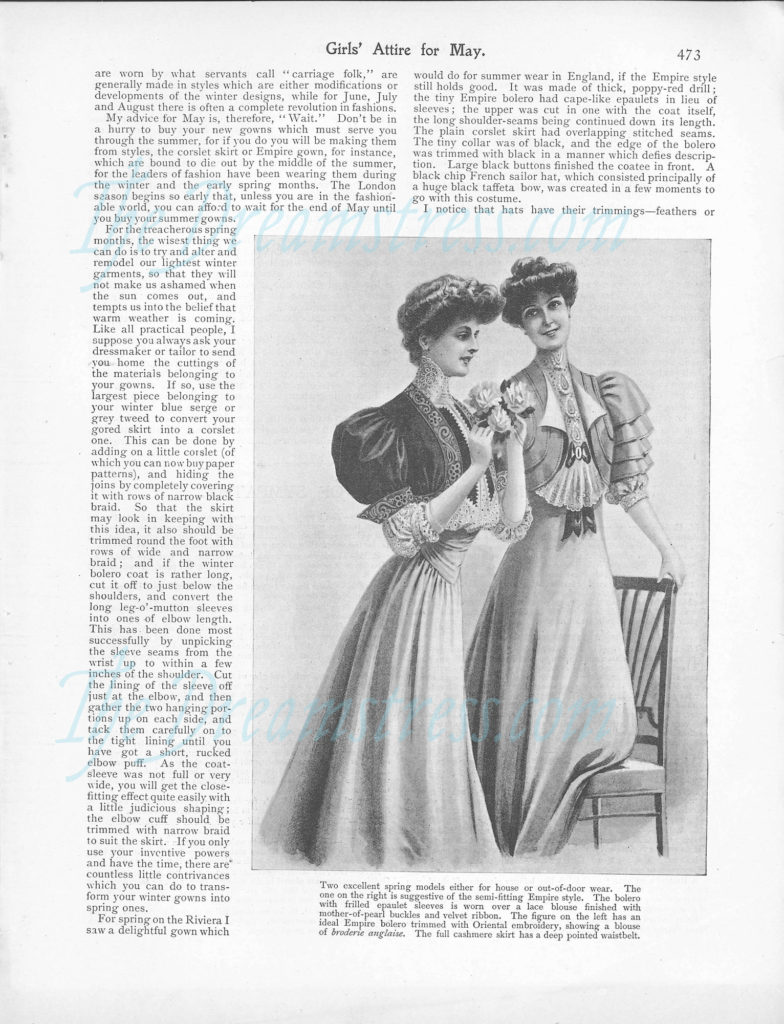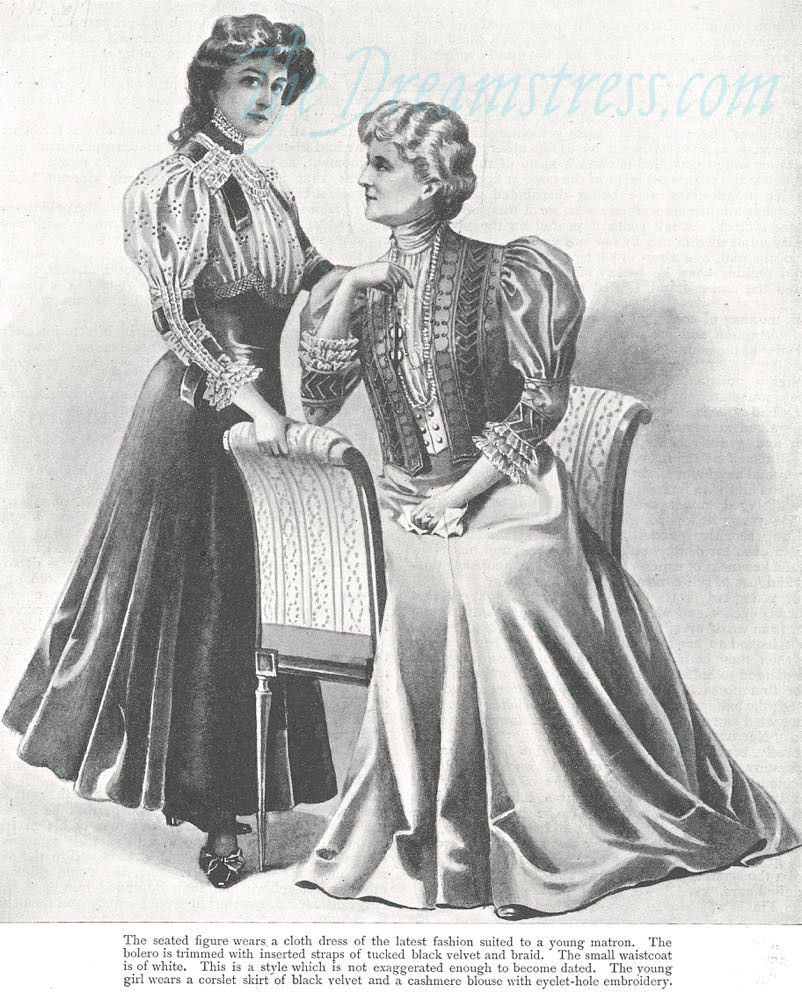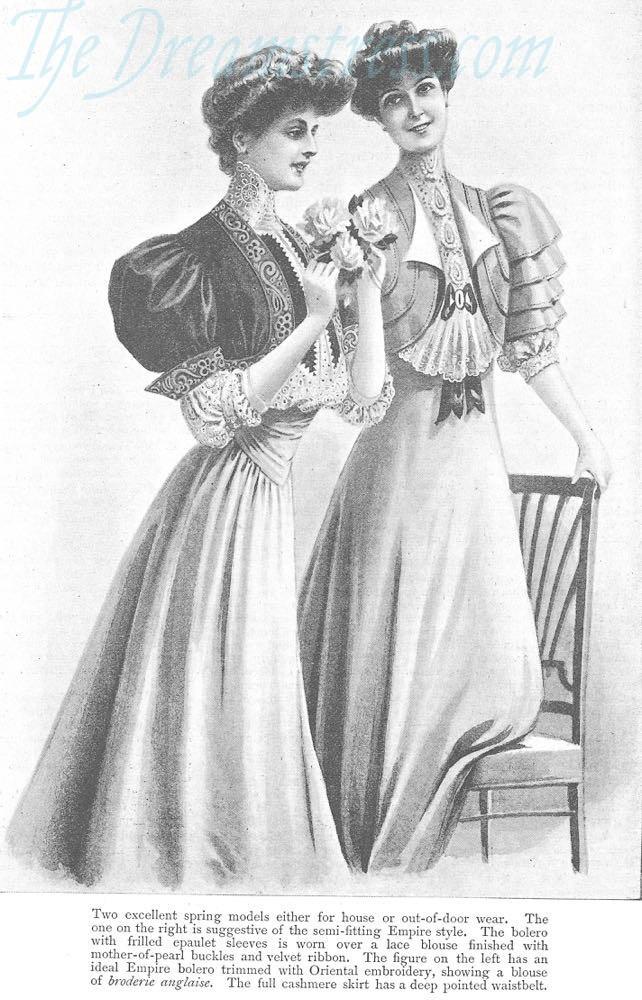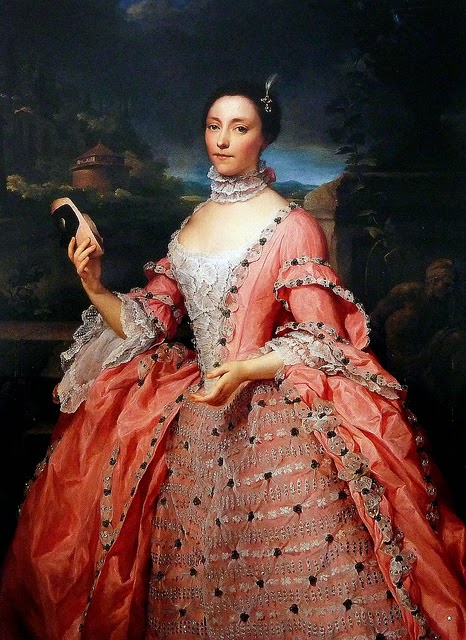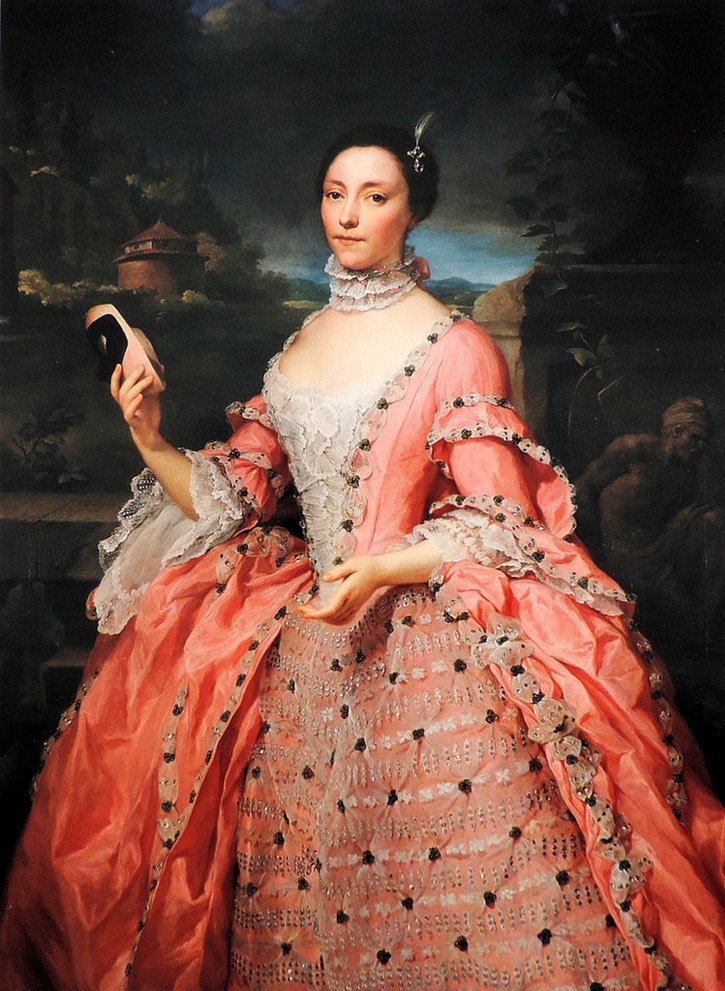I’m having some problems with my hand due to an injury, so I can’t do much computer-y (or exciting sew-y, sigh…) stuff at the moment, so things may be a bit quiet here on the blog front here for the next few weeks. Not too quiet though – the amazing and wonderful Mr D* is helping me to write this post, and to finish off all the draft posts I’ve had sitting around waiting to publish, so there should still be some interesting stuff.
Last week’s 18th century frothy pink masquerade Rate the Dress was quite popular, although some of you didn’t care for the darker bead (?) trim, while others thought it worked, but needed more black. You did notice the asymmetry of the skirt, but no one seemed to mind it much. So Arabella managed a very rosy 8.8 out of 10, with only a few tiny flies marring the ice-cream sundae perfection of her confection (the spots, not the poor ratings).
This weeks Rate the Dress is the first thing I randomly chose from my bookmarked list of RtD possibilities (to avoid irritating Mr D too much) – but it works perfectly, because it looks like it could have stepped right out of the 1906 fashion plates I showed you last week, and the spotted lace under-sleeves resonate nicely with the darker spotting on last week’s pink frock.
This dress appears to be made from a corduroy or some other type of corded velvet.
The spotted net of the sleeves was particularly fashionable ca. 1905 – it appears frequently in fashion plates, and I’ve encountered at least three other spotted net sleeves in person in museum collections.
The skirt is a five-gored skirt, similar to the Fantail, but with curved panels, creating the typical bell shape of the ca. 1905.
What do you think? Do you like the mix of dark and light, heavy and frothy?
Rate the Dress on a Scale of 1 to 10
* she told me to write that


